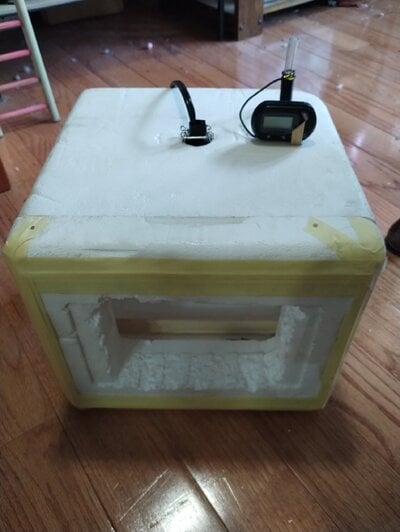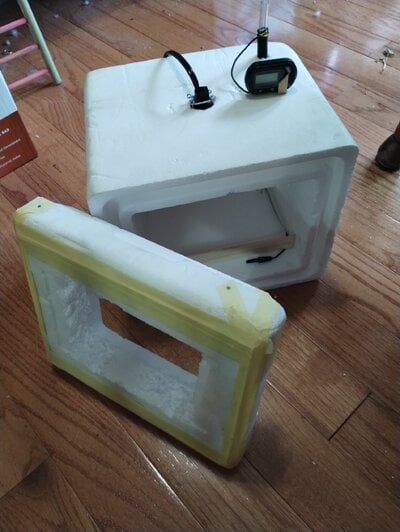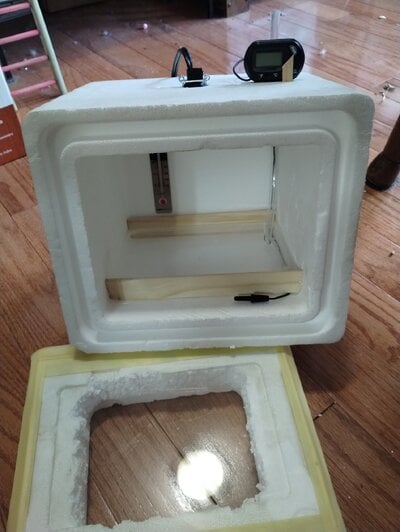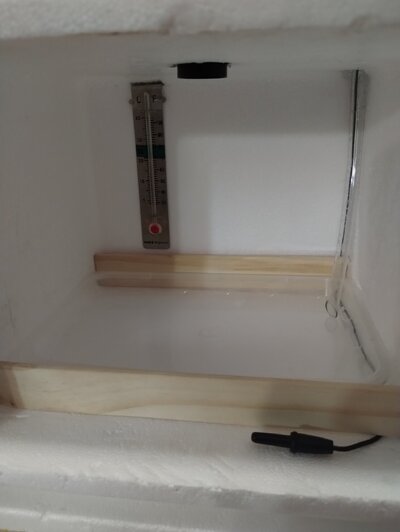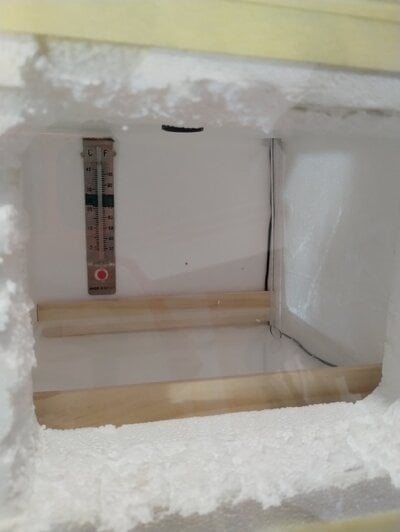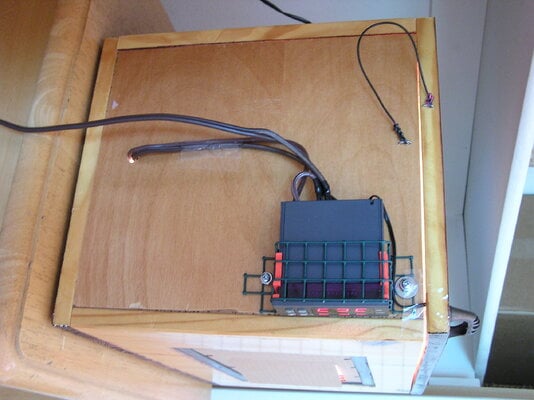Squeeing_Onion
Chirping
- Jun 17, 2023
- 44
- 58
- 64
This is a very small incubator i intend to use for quail eggs.
It has two thermometers for redundancy insurance in case one goes goofy, one glass and one digital (needs batteries but it works!).
The bottom has a plastic tray for holding water. A hose extends down into the tray so water can be added without opening the incubator. I don't have the cork yet, but i will be capping the exposed end above the ceiling with a cork.
Above the shallow water basin will be a small tray of hardware cloth that will neatly rest upon the wooden frame, over the water. The chicks will not be able to access the water.
The light socket is for a salt lamp so it has a dimmer switch to help me adjust temperature once i put a light bulb in.
The next step is ventilation -- I'm wary of installing a fan because even though i have plenty i could salvage from old computers, I've never wired one to a switch before.
-Could i get away without a fan and just have screened vents i can open and adjust? Would it be better for the quail chicks if there was a fan for air circulation?
-Can i put paper towel over the hardware cloth so the chicks hatch onto a softer surface instead of right into metal, or would it get too humid? Do you have other suggestions for holding the eggs?
The inside of the incubator is roughly 8" x 8" x 7"
It has two thermometers for redundancy insurance in case one goes goofy, one glass and one digital (needs batteries but it works!).
The bottom has a plastic tray for holding water. A hose extends down into the tray so water can be added without opening the incubator. I don't have the cork yet, but i will be capping the exposed end above the ceiling with a cork.
Above the shallow water basin will be a small tray of hardware cloth that will neatly rest upon the wooden frame, over the water. The chicks will not be able to access the water.
The light socket is for a salt lamp so it has a dimmer switch to help me adjust temperature once i put a light bulb in.
The next step is ventilation -- I'm wary of installing a fan because even though i have plenty i could salvage from old computers, I've never wired one to a switch before.
-Could i get away without a fan and just have screened vents i can open and adjust? Would it be better for the quail chicks if there was a fan for air circulation?
-Can i put paper towel over the hardware cloth so the chicks hatch onto a softer surface instead of right into metal, or would it get too humid? Do you have other suggestions for holding the eggs?
The inside of the incubator is roughly 8" x 8" x 7"

